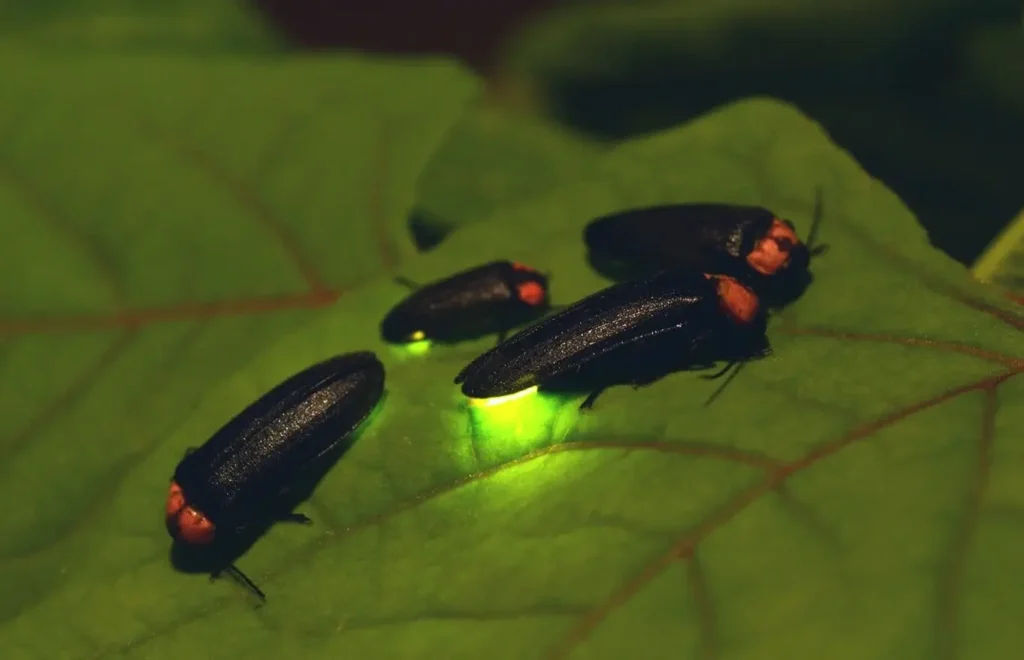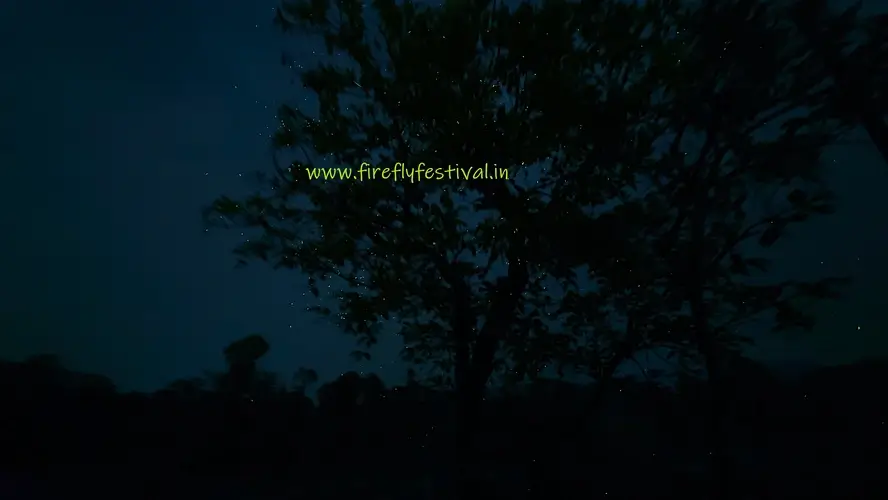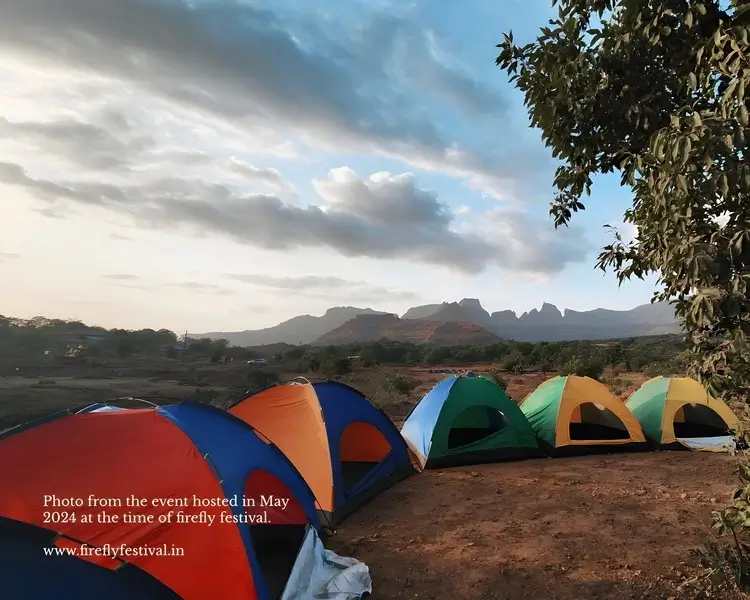The Firefly Festival also knows as Kajwa Mohotsav in Marathi in Maharashtra is an annual natural phenomenon celebrated across various forested and rural areas of the state, typically during the pre-monsoon months of May and early June. The event centers around the mesmerizing display of bioluminescent fireflies that gather in large numbers to mate, lighting up trees and bushes in a synchronized glow. The festival has gained widespread popularity among nature lovers, campers, photographers, and eco-tourists for its unique and enchanting experience.
Overview
Fireflies, also known as lightning bugs, are nocturnal beetles belonging to the family Lampyridae. During the mating season, male fireflies produce rhythmic flashes of light to attract females, who respond with their own signals. This courtship communication results in breathtaking natural light shows in certain regions of Maharashtra, particularly where artificial lights are minimal and natural habitats are preserved.

The Firefly Festival is not a man-made event but rather a nature-centric celebration that aligns with the ecological cycle of fireflies. Several rural and tribal communities in Maharashtra have embraced the event as an opportunity to promote sustainable tourism, cultural interaction, and conservation awareness.
Locations
The Firefly Festival is observed in several scenic locations in Maharashtra, with some of the most popular being:
1. Ghatghar, Bhandardara
Located in the Ahmednagar district, Ghatghar Bhandardara is a lush green hill station known for its pristine lakes and forests. The surrounding Western Ghats create an ideal habitat for fireflies, making it one of the most famous spots for the festival.

2. Purushwadi
A tribal village near Nashik, Purushwadi is one of the earliest destinations to popularize firefly tourism in the region. Hosted by local communities with support from eco-tourism operators, the experience here is immersive, with homestays and cultural activities.
3. Rajmachi
Nestled between Lonavala and Karjat, Rajmachi is a favorite among trekkers. During firefly season, the forest trails light up with thousands of fireflies, providing a magical visual treat on night treks.
4. Samrad and Sandhan Valley
Close to Bhandardara, the remote village of Samrad and the narrow gorge of Sandhan Valley offer dense forest cover, making it a top destination for firefly viewing.
5. Kothaligad (Peth Fort)
Near Karjat, this region is surrounded by dense woods where fireflies are seen in large numbers before the onset of monsoon.
Best Time to Visit
The best time to witness the Firefly Festival (Kajwa Mohotsav) is typically 2 to 3 weeks before the monsoon rains begin, usually from mid-May to early June. The weather during this period is warm and humid, which creates optimal conditions for fireflies to mate and glow.
Activities and Attractions
Visitors to the Firefly Festival can enjoy a range of nature-based and community-driven experiences, such as:
- Firefly spotting walks and night treks
- Camping under the stars
- Tribal village stays and cultural exchanges
- Photography and time-lapse opportunities
- Eco-friendly food and local cuisine
- Workshops on conservation and biodiversity

Ecological Importance
The Firefly Festival (Kajwa Mohotsav) underscores the importance of biodiversity conservation and sustainable tourism. Fireflies are highly sensitive to environmental changes, and their presence is a strong indicator of a healthy ecosystem. Threats such as light pollution, pesticide use, deforestation, and urban expansion have been linked to declining firefly populations globally.
To address this, many firefly tourism organizers in Maharashtra emphasize eco-conscious travel practices, such as:
- Restricting artificial light sources
- Avoiding loud noises and music
- Not touching or disturbing fireflies
- Following waste management protocols
- Encouraging support for local communities
Tourism and Economic Impact
Over the past decade, the Firefly Festival has become a significant seasonal draw for domestic and international tourists. Eco-tourism operators, camping companies, and local villagers benefit economically through homestays, guided tours, and food services.
Government and non-government organizations have also shown interest in developing firefly tourism as a means of rural development and nature conservation. By generating income for local communities, the festival encourages the preservation of natural habitats and discourages harmful practices like deforestation and poaching.
Cultural Significance
While the Firefly Festival is primarily ecological in nature, it also fosters cultural appreciation by allowing urban dwellers to engage with rural and tribal lifestyles. Traditional folk songs, farming rituals, and local legends related to monsoon and harvest seasons are often shared with visitors.
In some regions, the sighting of fireflies is considered an auspicious sign of rain and fertility, connecting it to the agrarian calendar and local mythology.
Conservation Challenges
Despite its growing popularity, the Firefly Festival faces several conservation challenges:
- Habitat degradation due to unregulated tourism
- Light pollution from flashlights and vehicles
- Littering and plastic waste in natural areas
- Disturbance to wildlife caused by crowding
To mitigate these issues, responsible travel guidelines have been developed, and many eco-tourism organizers work with environmentalists to ensure sustainable practices are followed.

The Firefly Festival in Maharashtra is a celebration of nature’s wonders and a reminder of the delicate balance required to sustain biodiversity. It offers an immersive experience where visitors can reconnect with nature while supporting local livelihoods. With continued efforts in eco-tourism, education, and community involvement, the festival holds the potential to become a model for sustainable natural tourism in India.
